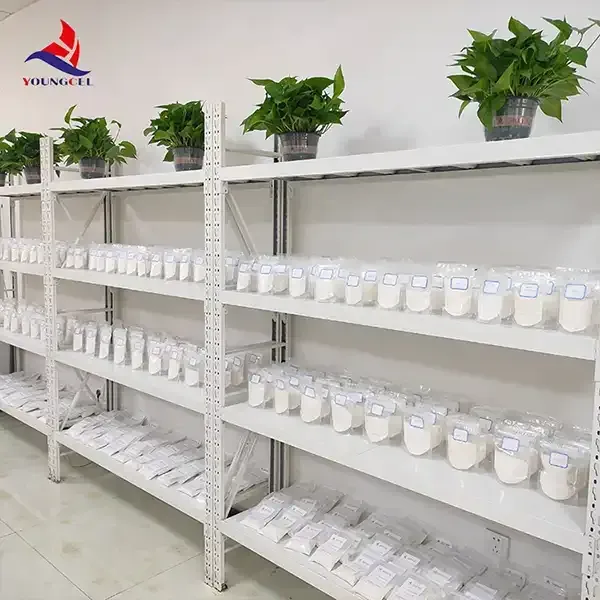Cellulose Coating Revolutionizing Surface Protection and Sustainability
In recent years, there has been a growing emphasis on sustainability and eco-friendly practices across various industries. One of the noteworthy advancements in this realm is the development and application of cellulose coatings. Derived from natural cellulose, which is the primary structural component of plant cell walls, cellulose coatings provide an excellent alternative to traditional synthetic coatings. This article explores the benefits, applications, and future potential of cellulose coatings.
Understanding Cellulose Coatings
Cellulose coatings are primarily composed of cellulose ethers and esters, which are modified forms of cellulose. These coatings can be applied to diverse surfaces, including paper, wood, textiles, and plastics, serving various purposes such as surface protection, moisture resistance, and aesthetic enhancement. The inherent properties of cellulose, including biodegradability and renewability, make these coatings an appealing choice for environmentally-conscious manufacturers and consumers.
Advantages of Cellulose Coatings
One of the most significant advantages of cellulose coatings is their environmental sustainability. Unlike synthetic coatings, which often contain harmful chemicals and contribute to environmental pollution, cellulose coatings are derived from renewable resources. They can decompose naturally, reducing the amount of waste that contributes to landfills. This biodegradability also aligns with the increasing global demand for green products and sustainable practices, pushing industries to rethink their reliance on petroleum-based materials.
Additionally, cellulose coatings exhibit excellent barrier properties. They are effective in providing protection against moisture, oils, and oxygen, making them suitable for packaging applications. Food packaging, in particular, benefits from cellulose coatings as they can help prolong shelf life without the need for synthetic preservatives. Their effectiveness in maintaining product integrity while being safe for consumption makes them a popular choice among food manufacturers.
Another advantage is their versatility in application. Cellulose coatings can be easily modified to achieve different functional properties, such as increased adhesion, improved gloss, or enhanced durability. This adaptability makes them suitable for a wide range of applications, including consumer products, industrial coatings, and even biomedical devices.
cellulose coating

Applications in Various Industries
The applications of cellulose coatings extend across multiple sectors. In the packaging industry, they are increasingly being adopted for food and beverage products. Their natural origin and safety features make them an ideal alternative for companies looking to enhance their product appeal while adhering to environmental regulations.
In the automotive and aerospace sectors, cellulose coatings are being explored for their lightweight properties and protective features. Their resistance to corrosion and wear makes them suitable for exterior finishes and interior components, contributing to the overall longevity and performance of vehicles and aircraft.
Moreover, the textile industry is witnessing a rise in the adoption of cellulose coatings for functional textiles. These coatings can impart properties such as water resistance, stain repellency, and anti-microbial functions. As sustainable fashion becomes more prevalent, cellulose-coated fabrics are likely to grow in popularity among environmentally-conscious consumers.
The Future of Cellulose Coatings
The future of cellulose coatings appears promising, with ongoing research and innovation aimed at enhancing their functionality and performance. Scientists are exploring ways to improve the mechanical properties and thermal stability of cellulose coatings to broaden their usability without compromising their environmental benefits.
As industries continue to seek ways to reduce their carbon footprint and improve sustainability, cellulose coatings are positioned to play a significant role in this transition. With regulatory pressures on synthetic materials increasing, the demand for eco-friendly alternatives like cellulose coatings will likely surge.
In conclusion, cellulose coatings represent a groundbreaking development in surface protection and environmental sustainability. Their diverse applications, coupled with a commitment to reducing environmental impact, position them as a key player in the future of eco-friendly materials. As we move toward a more sustainable world, the adoption of cellulose coatings will undoubtedly increase, paving the way for greener solutions in various industries.
-
Premium Detergent Grade HPMC Hydroxypropyl Methylcellulose: Superior Thickening & StabilityNewsAug.31,2025
-
HEC 100000 Hydroxyethylcellulose for Paint | Superior ThickeningNewsAug.30,2025
-
Wall Putty Rdp Powder Packaging DesignNewsAug.29,2025
-
Introduction to Hpmc Hydroxypropyl Methyl CellulosNewsAug.29,2025
-
Hpmc Industri Grade IntegrationNewsAug.29,2025
-
How to Choose the Right Construction AdhesiveNewsAug.29,2025




